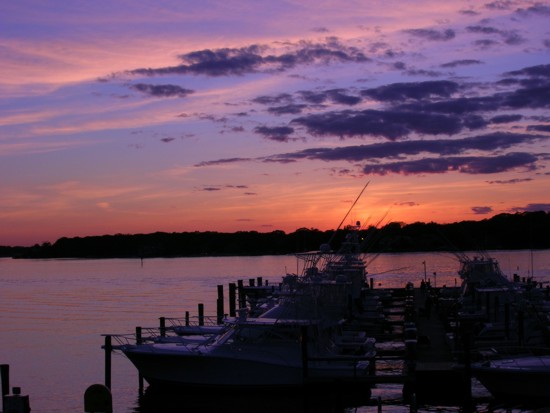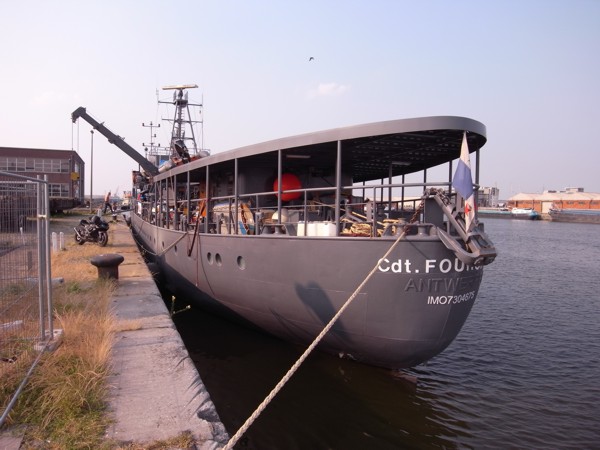 |
| An Exceptional Dive Platform |
Last week, a few friends and I had the opportunity to join the North Sea Expedition 2009. This was an all CCR trip to visit some untouched wrecks. The trip was coordinated by a group of Belgium divers who were gracious enough to invite groups from the UK, parco gonfiabili and the USA. The dive platform was the Cdt. Fourcault, a 150 ft converted military vessel. The owner/captain, Pim, lives aboard with his lovely wife Angel. They hosted the entire group in their “home”.
At the beginning of the week Pim made a comment that the highlight of the week is not the diving, but the people. His words could not have been more accurate. I’m not down playing the diving, but it was overshadowed by the people we met. First, the Belgium dive group did a fantastic job of putting this trip together! I can not say enough about how smoothly and professionally this was carried out! Not only did they plan and coordinate the diving, but also supplies (tanks, weights, sorb …), transportation, and even dinner plans in town. Second, Pim and Angel were two of the best hosts anyone could ask for. Can you imagine having over 20 people staying in your house? Meeting, diving, and spending time with them was one of the trips highlights! They also had a great crew assembled for the trip. They all kept the ship and dive operations running smoothly, and safely all week. In addition they were fun and interesting people to meet and work with.
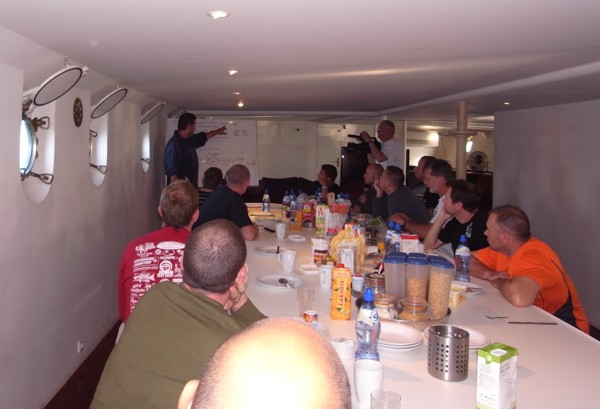 |
| Group Dive Brief |
In addition to our hosts, many other great divers were aboard for this trip. We spent long hours laughing and talking about trips, techniques, and gear: what works, what doesn’t. Just a great group to spend time with.
Now lets talk about the diving.
Dive operations were very different from here in the Northeast US. We have some areas around inlets and sounds (Block Island and Rode Island for example) where dive operations must be scheduled around the slack tides. In the North Sea, all dive operations seem to revolve around the tides. There is a dive window of around 2 hours. At the start of this window the current is dropping down to a manageable range. During the dive the current eventually stops completely, and reverses. The trick is to get back on the line before the current picks up and becomes unmanageable.
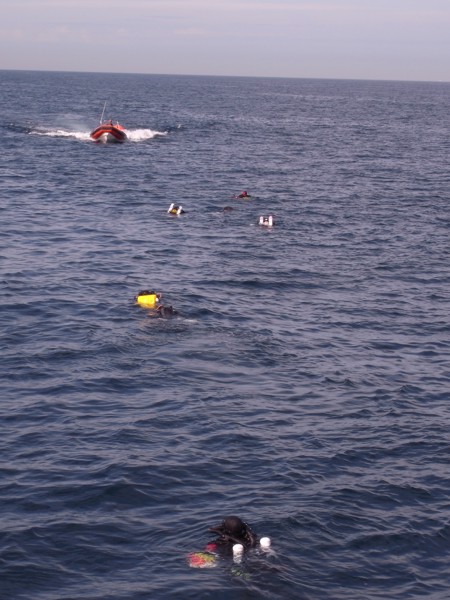 |
| Drift to the shot |
To operate in these conditions, divers use some different techniques than we use here. The ship does not anchor into the wreck. Prior to dive operations, shot lines are dropped on the wreck. Theses use large weights, and grapnels to drop quickly to the bottom, and hook the wreck. Next the dive vessel is positioned up current of the shot line. If possible, the vessel will anchor in this position. However, based on wind and current, this may not be possible. Divers then jump in and drift to the buoy on top of the shot, then descend to the wreck. The first divers secure the line into the wreck. Each diver attaches a marker to the line, and removes it when they head back up. The last diver unclips the line, and the entire group drifts with the shot line.
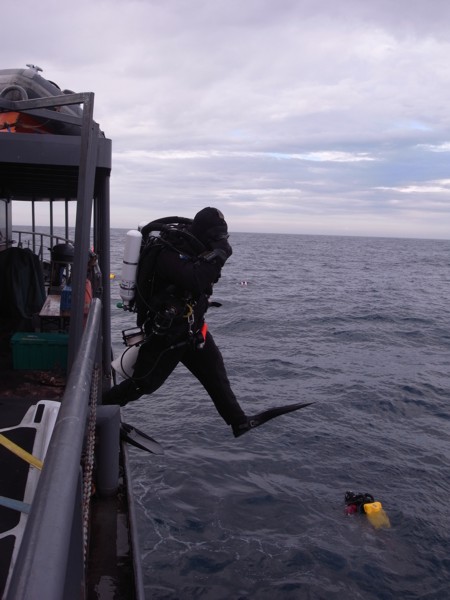 |
| Giant stride! |
A few techniques that are specific to the Cdt. Fourcault: Jumping into the water involves a 12-15 ft drop from the main deck. Now that’s a Giant stride! Any time divers are in the water, one of the three RIB is standing by to assist. At the end of the dive, the RIB can bring the diver back from the shot line. If conditions are right, the diver can simply drift back in the current. Once alongside the diver swims into a platform that is lifted up onto the main deck. No ladder!
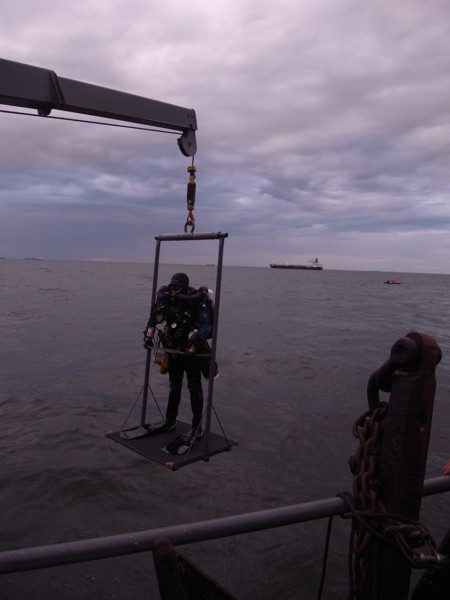 |
| Look Ma, no ladder! |
This combination of techniques allows for operations in much heavier seas than we would normal consider locally. Since the sea conditions on the North Sea are normally rougher than we experience here, this is a necessity. The US divers were subjected to a trial by fire on the first dive. Jumping into 8 ft seas and swimming to a buoy barely visible between swells. Once there we descended to the wreck into a strong current. On the wreck we enjoyed searching about for artifacts, as well as seeing an abundance fish life different from our own. During the ascent, we hung on the line like flags in the wind. After the shot line was unclipped we then drifted along like plankton. Back on the surface, we bobbed about in the swells until, the RIB picked us up, one at a time. Attached to the back of the RIB is a foam raft (boogie board). The diver climbs aboard the raft, and the RIB heads back to the mother ship, diver in tow. In 8 ft seas, this is quite an experience.
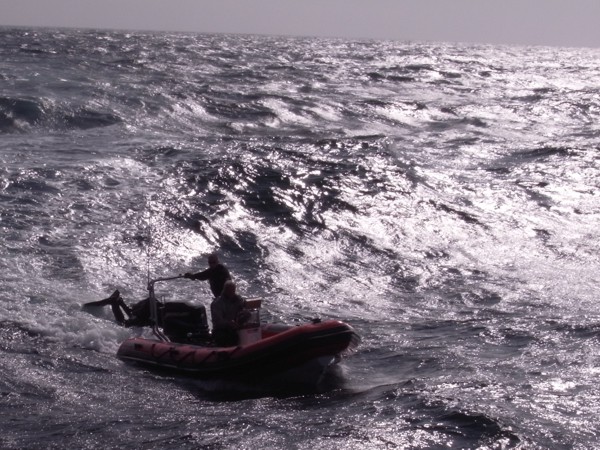 |
| Riding the Boogie Board |
The Dives:
Again, I must say thanks to the Belgium dive team for their work in lining up a number of great dives. Many of the wrecks had not been dived before, and we all accepted that they may or may not be worth the effort. For the most part the risk was worth the reward. Conditions on the bottom varied from 10 ft to over 30 ft of visibility. One advantage of the strong tidal current, there is no thermocline. The water was 60 deg F from top to bottom.
Some of the wrecks were intact or nearly so. Others were debris fields in the sand. One wreck was completely engulfed in a sand bar, leaving only the bow, and small tips of debris visible. Others stood up prominently, providing large areas with easy penetration. Here inside the wrecks many artifacts were recovered. Portholes, plates, bottles, spoons, placards, even a telegraph, were all brought into the daylight for the first time in many years.
I’ll try to add more details on individual wrecks, but this post is long enough. Let me end by saying, it was a great trip! Good dives, good friends, good Belgium beer.






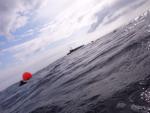 Click the image to see all the slides.
Click the image to see all the slides.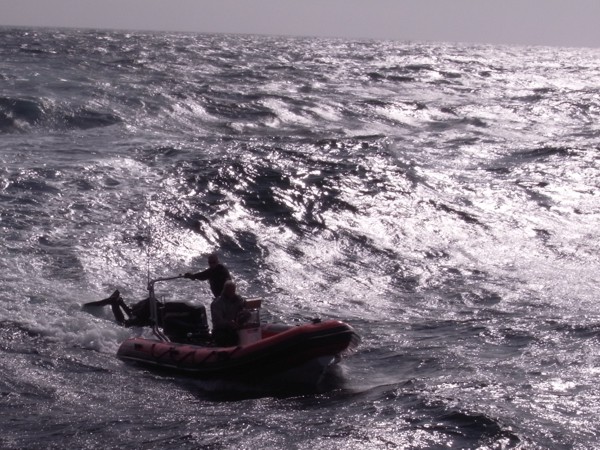 Video: How to board a boat Cdt. Fourcault style!
Video: How to board a boat Cdt. Fourcault style!